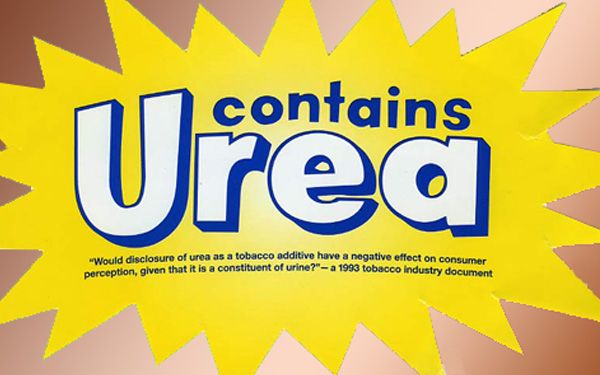Smoking harms nearly every organ of the body and diminishes a person’s overall health. Millions of People have health problems caused by smoking. Here are some interesting facts on smokes
# Most traded item on the earth are Cigarettes with approximately 1 trillion being sold from country to country each year. At a worldwide take of more than $400 billion.
# Most traded item on the earth are Cigarettes with approximately 1 trillion being sold from country to country each year. At a worldwide take of more than $400 billion.
# Scientists claim the average smoker will lose 14 years of their life.
# Harvard
University and the Massachusetts Health Department revealed that between 1997
and 2005 the amount of nicotine in Camel, Newport, and Doral cigarettes may
have increased by as much as 11 percent.
# US
President Nixon signed the law that placed warning labels on cigarettes In 1970
and banned television advertisements for cigarettes.
# U.S.
cigarette manufacturers now make more money through exports than they do
selling to Americans.
# Marlboro,
Kool, Camel and Kent own roughly 70% of the global cigarette market.
#
Cigarettes contain Arsenic, Formaldehyde, Lead, Hydrogen cyanide, Nitrogen
oxide, Carbon monoxide, Ammonia and 43 known carcinogens.
# Urea, is used to add “flavor” to
cigarettes.
# Cork Tip
filter was made-up in 1925 by Hungarian Boris Aivaz, who patented the procedure
of making the cigarette filter from crepe paper. All kinds of filters were
tested, although cork is not likely to
have been one of them.
# The
legal age for the purchase of tobacco products is now 18, raised from 16, In
most countries, In Japan minimum age is 20.
# Smoking
bans in public places by many countries. As a result, many social businesses
have claimed a significant drop in the number of people who go out to pubs,
bars and restaurants.
# Highest
percentage of smokers in US are from Kentucky (28.7%), Indiana (27.3%), and
Tennessee (26.8%), while the states with the fewest are Utah (11.5%),
California ( 15.2%), and Connecticut (16.5%).
#
Cigarettes can contain more than 4,000 ingredients, which, when burned can also
produce over 200 ‘compound’ chemicals. Many of these ‘compounds’ have been
linked to lung damage.
# Nicotine
reaches the brain within 10 seconds after smoke is inhaled. It has been found
in every part of the body and in breast milk.
# Sugar attacks
approximately 20% of smokers, and many diabetics are unaware of this secret
sugar intake. Also, the effect of burning sugar is unknown.
# The
immune systems of smokers has to work harder every day than non-smokers. As a
result, a smokers’ blood will contain less antioxidants, although a smokers
immune system may be quicker to respond to virus attacks due to its more active
nature.
19. ‘Lite’
cigarettes are produced by infusing tobacco with CO2 and superheating it until
the tobacco ‘puffs up’ like expanding foam. The expanded tobacco then fills the
same paper tube as ‘regular’ tobacco.
# ‘Lite’
cigarettes are manufactured with air holes around the filter to ventilate the
smoke as it is drawn in. Many smokers have learned to cover these holes with
their fingers or their lips to get a stronger hit.
# Smokers
draw more tar on ‘lite’ and menthol cigarettes than regular cigarettes.
# Smokers
often smoke after meals to ‘allow food to digest easier’. In fact, this works
because the bodies priority moves away from the digestion of food in favor of
protecting the blood cells and flushing toxins from the brain.
# A number
of people (generally males) can be aroused by the sight of smoker smoking
(usually females). This is called the Smoking Fetish, the reason for this
arousal can usually be traced back to incidents in childhood. However,
cigarettes – particularly menthols, force blood away from the penis if smoked
while aroused.
#
According to WHO, approximately 25% of cigarettes sold around the globe are smuggled.
# Toppings
are added to the tobacco for unique taste
. Some of these toppings have included; clove, licorice, orange oil, apricot
stone, lime oil, lavender oil, dill seed oil, cocoa, carrot oil, mace oil,
myrrh, beet juice, bay leaf, oak, rum, vanilla, and vinegar.
# Most
smokers take up the habit in their mid teens, well before the legal age for
purchasing them, and is seen as a passage towards adulthood. Other perceived
rights of passage include: aftershave, wearing stilettos, alcohol, drugs and
sexual intercourse; with a combination of these sometimes being cited as the
main causes of teenage pregnancy.
# Smokers usually
report a variety of after-effects; such as stillness, leisure, attentiveness,
stimulation, attentiveness and many others. In fact, smoking will produce a
different consequences in each individual depending on what they anticipate to
get; turning the cigarette into the worlds most popular placebo (satisfying the
brains hunger for nicotine being the only ‘relaxing’ factor). The smoker will
then use these potential as a means to maintain the habit.
# Nicotine
in a cigarette is many times more potent than that of a tobacco plant.
If pregnant
woman smokes, lower the amount of oxygen available to her and growing baby,
that increase baby's heart rate. And the chances of miscarriage and stillbirth,
Increase the risk that baby is born prematurely and/or born with low birth
weight. Increase the risk of developing respiratory (lung) problems in baby.
The more cigarettes smoke per day, the greater the baby's chances of developing
these and other health problems. There is no "safe" level of smoking
while pregnant.
# Tobacco kills up to half of its users.
Tobacco kills nearly six million people each year, of whom
more than 5 million are users and ex users and more than 600 000 are nonsmokers
exposed to second-hand smoke. Unless urgent action is taken, the annual death
toll could rise to more than eight million by 2030.












No comments:
Post a Comment